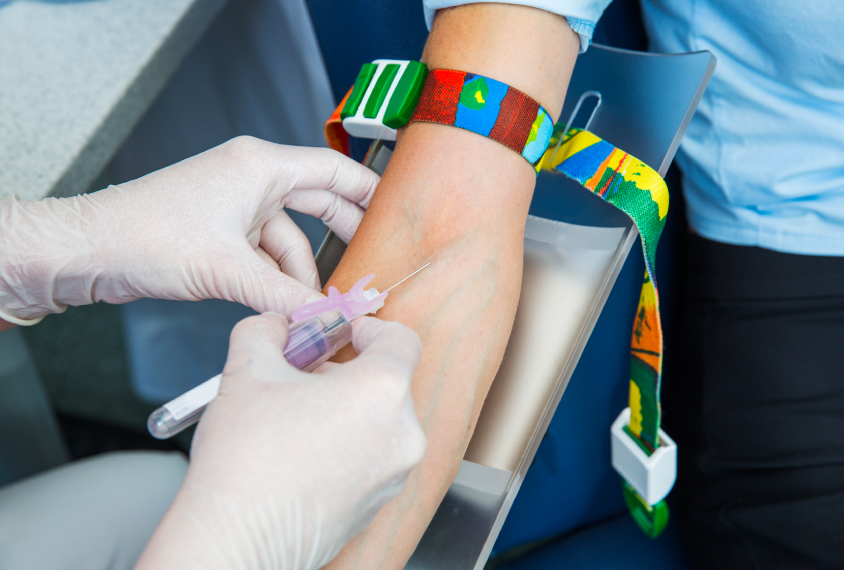
Growth factor levels may be elevated in children with autism
Children with autism may have increased blood levels of brain-derived neurotrophic factor, a protein that spurs the formation of neuronal connections.
Children with autism have increased blood levels of brain-derived neurotrophic factor (BDNF), according to a new meta-analysis1. This protein spurs the formation of neuronal connections, or synapses, which may be unusually abundant in individuals with autism. But the study comes with a list of caveats, and it is still unclear what role, if any, BDNF plays in autism, experts say.
Studies probing the link between BDNF and autism have shown mixed results: Some report elevated levels of the protein in people with autism, but others indicate the opposite or no difference relative to controls. Varied methods for collecting and storing samples may contribute to the discrepancies, says Yoke Peng Loh, head of cellular neurobiology at the National Institute of Child Health and Human Development and lead investigator on the new study.
To tease a signal from the noise, Loh and her colleagues compiled results from 19 studies — involving a total of 2,896 children — which measured blood levels of BDNF in children with autism and typical children. “It would be very interesting, we thought, to correlate any changes in blood levels of BDNF and autism,” Loh says.
The analysis revealed that BDNF levels are higher in children with autism than in those without the condition. The results are published in the November issue of JAMA Pediatrics. They jibe with those of two meta-analyses published in August2,3.
Word of caution:
Experts question how these findings relate to the biology of autism, however. The biggest caveat is that the amount of BDNF in the blood may not mirror its levels in the brain.
“It’s very dangerous to speculate that the blood BDNF levels are a good marker of what the central nervous system BDNF levels are,” says Barbara Hempstead, professor of medicine and neuroscience at Weill Cornell Medical College in New York, who was not involved in the study.
What’s more, all but one of the studies included in the meta-analysis did not discriminate between the mature form of BDNF and an immature precursor. The mature form promotes neuron growth and survival, but the precursor restricts neuron development and may trigger cell death.
A 2012 study found high levels of the precursor, but not the mature protein, in the postmortem brains of people with autism4. The finding suggests that the biology underlying synapse formation and pruning is altered in autism, says Margaret Fahnestock, professor of neuroscience at McMaster University in Hamilton, Ontario, who led that study.
Researchers should track each form of BDNF to determine how the growth factor influences brain development, says Fahnestock.
Whether BDNF levels are elevated seems to depend on the kind of sample analyzed. Blood drawn from a child after his autism diagnosis shows elevated levels of BDNF. Levels in dried blood spots from newborns later diagnosed with autism do not differ from those of controls, however.
Because of these discrepancies, blood levels of BDNF are unlikely to be reliable biomarkers for autism. But the protein may still play a part in the pathways that lead to autism, Hempstead says.
The ability of the different forms of BDNF to shape the development of neuronal connections makes it incredibly intriguing to study, she says. Studies of the growth factor in neurons derived from people with autism may help scientists understand its role in the condition.
References:
Recommended reading

Expediting clinical trials for profound autism: Q&A with Matthew State

Too much or too little brain synchrony may underlie autism subtypes
Explore more from The Transmitter

Mitochondrial ‘landscape’ shifts across human brain

